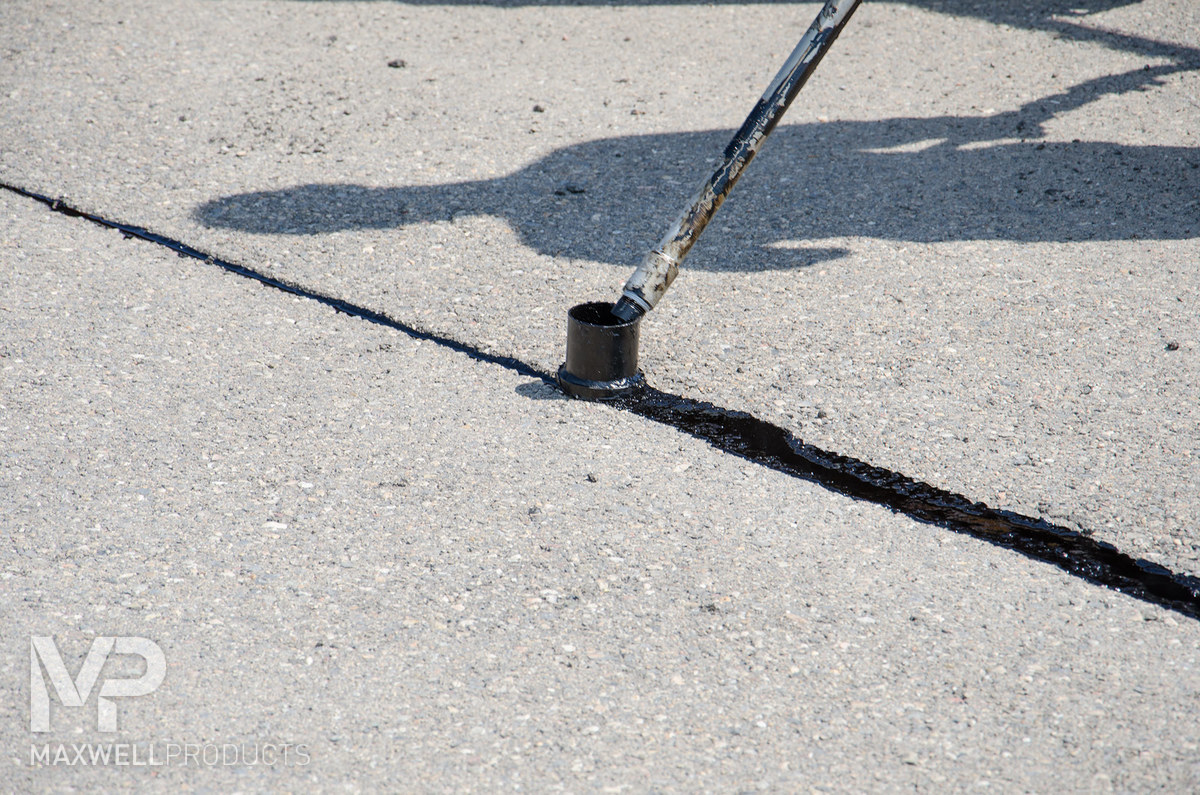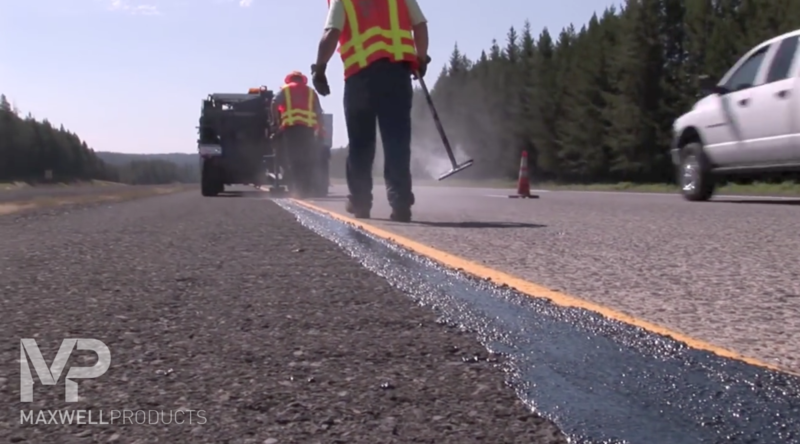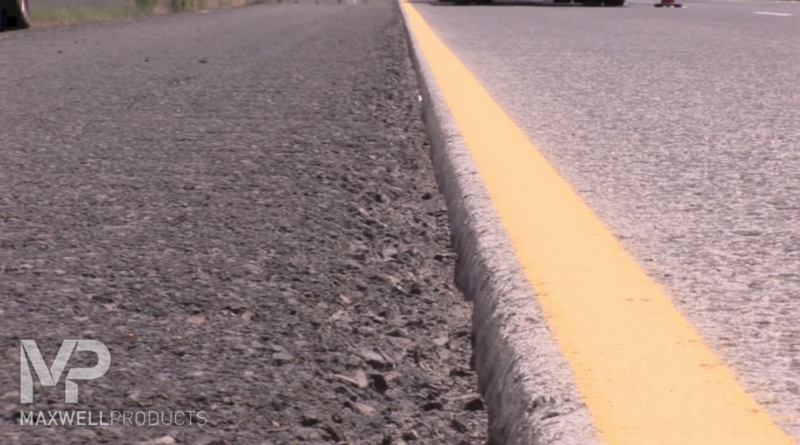According to a report published in USA Today, the 2014 national average for road construction was $162,200 per lane mile. While that figure might be stunning, it got worse in the northeast. Massachusetts paid over four times the national average, shelling out $675,000 per lane mile, and New Jersey came in at number one in paving costs at a whopping $2 million per lane mile.1 Imagine the average cost of repaving a 10-mile section of four- or five-lane freeway, in the neighborhood of $6-$8 million. That’s an expensive neighborhood (even more so in New Jersey, $80-$100 million), one which a proper pavement maintenance plan that includes crack sealing can ameliorate.
To make matters worse, pavement may also have shorter service life than it once did. The township of Newton, Connecticut, for example, expects their asphalt roadways to have a service life between 15-20 years, depending on the traffic load. However, they found in late 2014 that, due to state specifications, the increase in recycled asphalt as a component, road de-icers, and, perhaps, some asphalt manufacturing quality issues, Newton’s roads were lasting only five to seven years, and sometimes less.2 The people of Newton were, understandably, concerned over the prospect of regularly spending large sums for repaving projects.
“The consequence of not sealing cracks is increased life cycle cost of the pavement,” said R. Buzz Powell, PhD, assistant director and test track manager for the National Center for Asphalt Technology at Auburn University. “Pavements that are not crack sealed will continue to deteriorate, and more aggressive and costly treatment may be required in the future.”
But the solution to soaring cost is simple, turn to the federal government. The United States federal government takes in trillions of dollars in tax revenues, with some of that money going to the Federal Highway Administration (FHWA). The United States Congress and the FHWA represent an unlimited supply of money for paving and road maintenance, right? Wrong. In fact, entirely wrong as it turns out.
The Highway Trust Fund is the FHWA’s financial vehicle for supporting projects related to roadways and the interstate system nationwide. Motor fuels taxes fund the trust (18.4 cents per gallon for gasoline and 24.4 cents per gallon of diesel), which is then doled out to each state; however, taxes haven’t been adjusted for inflation since 1993, meaning that while revenues have remained flat for over two decades, costs have not.3 Additionally, lower fuels consumption due to the recent recession, better fuel efficiency of modern vehicles, and the changing driving preferences by both the older and younger generations has also contributed to lower revenues.4 The Congressional Budget Office (CBO) projects that between 2021 and 2026, trust revenues will be approximately $243 billion, while distributions will be approximately $364 billion, a deficit of $121 billion.5 In fact, the fund has been insolvent since at least 2014, only saved by 11th-hour legislation. A bill signed into law in December of 2015 will keep the fund solvent until only 2020, so states and municipalities will need to find ways to stretch their road budgets over the next four years and beyond.
As you can see, the longer that local and state governments can extend the service life of pavement, the better it is for all concerned. A series of 1970s and 1980s studies conducted by the Ministry of Transportation, Ontario (MTO) concluded that “sealing cracks is a viable and cost-effective preventative maintenance treatment which can extend the service life of asphalt pavements by 2-5 years.”6 That could nearly double the service life of some roadways, stretching paving and maintenance budgets by leaps and bounds.
Crack sealing is the first line of defense against pavement distress and the expense, red tape, and hassle of repaving. You see, roadway cracking allows the infiltration of water and incompressible material into the breach. Water then penetrates to the base coarse materials, damaging the support structure and causing additional ice wedging and frost heaving in colder climates. Incompressible materials damage the walls of the crack during thermal compression cycles, widening cracks and causing material to pull loose from the walls. This expansion/compression cycle can widen cracks and turn them into voids and potholes, worsening the pavement problem and creating public safety and vehicle damage hazards. If left untreated, what was bad becomes worse. According to the Transportation Research Board of the U.S. National Academies of Science, Engineering, and Medicine, as water infiltrates base course layers through pavement cracks, deterioration is not only hastened, but maintenance costs are also increased.7
Arrests light deterioration.
Retards progressive failures.
Reduces the need for corrective maintenance.
“All our research on the NCAT Pavement Test Track, Lee Road 159, and US-280 tells us that crack sealing inhibits new cracking as a stand-alone treatment and reflective cracking in combination with other treatments. This benefit is observed in both short-term and long-term performance,” Powell said.
Unlike hot-mix asphalt (HMA) overlays or full depth repaving projects, the cost for crack sealing is rated at cents per foot plus hourly labor or by the ton of material per mile. Crack sealing project costs range in the tens of thousands per lane mile, far lower than the tens or hundreds of millions it will cost to repave.
A 2011 report of a long-term study by the Ohio Department of Transportation and the Federal Highway Administration showed that “crack sealed pavements, in general, performed better than the control sections on a 5-year cycle.9 Regardless of pavement type, aggregate type used in the surface layer, and the prior pavement condition, crack sealing always results in performance gain.”10 According to the study, composite pavements benefited the most. The performance prediction models used in the study indicate crack sealing can extend the service life of roads by up to 3.6 years.
Improved pavement conditions
Increased safety
Overall lower life cycle costs
In their conclusions, the researchers specifically recommended that ODOT develop a crack sealing policy “as a strategy for pavement preventive maintenance,” which they noted is most effective on pavements in their 66-80 Pavement Condition Rating (PCR) range.11
A joint study between the Minnesota Department of Transportation (MnDOT) and the National Center for Asphalt Technology (NCAT) returned similar results. Crack sealing on Lee Road 159 in Auburn, Alabama was shown to be “beneficial in all cases.”12
So you don’t have to replace pavement. You don’t have to burn through your annual budget, and you don’t have to field angry phone calls from frustrated motorists. It’s much easier to just keep up with roadway maintenance, and the first step is sealing cracks as they appear. Crack sealing has been shown to prevent further deterioration, extend the service life of pavement, save paving and road budget, and improve roadway safety. The question really isn’t “why crack seal?” It’s “why not?”
Click here to find out more about Maxwell Products’ quality line of Elastoflex and NUVO crack sealants, as well as GAP-Mastic and GAP-Patch for more complex pavement preservation issues. To order material or find out more, contact our friendly, helpful sales staff. Extend the life of your pavement, improve roadway safety, and save budget with Maxwell Products.
-
Michael Symons, Asbury Park (N.J.) Press, USA Today, updated October 12, 2014, $2million a mile: Why roads cost so much in N.J. http://www.usatoday.com/story/news/nation/2014/10/12/why-it-costs-you-2-million-a-mile-to-build-a-nj-road/17125069/ ↩
-
Andrew Goroska. Road Durability Issue Raises Town Spending Concerns. The Newton Bee. November 14, 2014. https://newtownbee.com/road-durability-issue-raises-town-spending-concerns/ ↩
-
The Concord Coalition. Fixing the Highway Trust Fund. February 23, 2016. http://www.concordcoalition.org/issue-briefs/2016/0223/fixing-highway-trust-fund ↩
-
Ibid. ↩
-
Ibid. ↩
-
Joseph Ponniah and Gerhard Kennepohi. Crack Sealing in Flexible Pavements: A Life-Cycle Cost Analysis. Transportation Research Record: Journal of the Transportation Research Board. 2014. http://trrjournalonline.trb.org/doi/abs/10.3141/1529-11 ↩
-
P Joseph, January 5, 1993, Crack Sealing in Flexible Pavements: A Life-Cycle Cost Analysis. https://trid.trb.org/view.aspx?id=368081 ↩
-
Montana Department of Transportation. Crack Sealing Manual. Accessed 1-18-17 https://www.mdt.mt.gov/publications/docs/manuals/crackseal.pdf ↩
-
Arudi Rajagopal, June 2011, Effectiveness of Crack Sealing on Pavement Serviceability and Life. Ohio Department of Transportation. Federal Highway Administration. ↩
-
Ibid. ↩
-
Ibid. ↩
-
R. Buzz Powell and Ben Worel. National Study to Quantify the Life Extending Benefit of Pavement Preservation. 2015. https://www.eng.auburn.edu/research/centers/ncat/files/webinar0107815.pdf ↩





